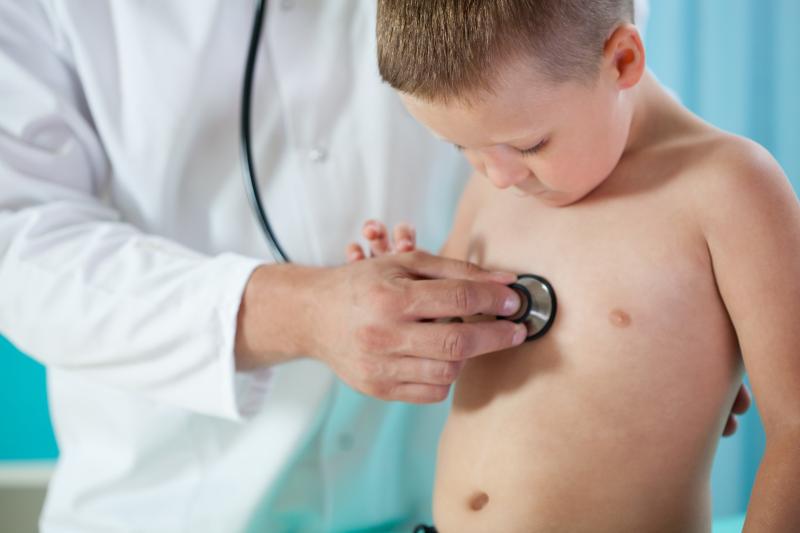Mechanical superior to manual CPT in children with lower respiratory tract infection





Using either the manual or mechanical chest physiotherapy (CPT) in children with lower respiratory tract infection (LTRI) improves symptoms with no adverse effects, according to a Singapore study. The latter, however, is better at reducing the respiratory rate (RR).
“A combined strategy of nebulized hypertonic saline followed by CPT for LRTI removes airway secretions and results in improvements of moderately severe respiratory distress,” the researchers said.
This study randomly assigned 30 children aged 5 months to 5 years who were admitted and referred for CPT from January to April 2017 to receive either manual CPT or mechanical CPT with LEGA-Kid. The researchers measured outcomes at preintervention and 2 hours postintervention, including RR, oxygen saturation, and modified Respiratory Distress Assessment Instrument (mrDAI) score.
All children demonstrated significant reduction in postintervention RR and mRDAI scores. There was an 8-percent decrease in RR for the manual CPT group (p=0.002) and a 16.5-percent drop in the mechanical CPT group (p=0.0001). The latter showed a significantly greater reduction (p=0.024). [Singapore Med J 2020;doi:10.11622/smedj.2020084]
On the other hand, mRDAI scores decreased by 2.96 in the manual group (p=0.0001) and by 3.62 in the mechanical group (p=0.002). No significant between-group difference was noted. Moreover, no significant improvement was observed in oxygen saturation. Adverse events did not occur after CPT.
“The LEGA-Kid mechanical CPT method was superior in reducing RR,” the researchers said, noting that the mechanical device is better than manual CPT performed by experienced personnel.
However, these results were not consistent with those of previous studies comparing CPT with no CPT in children aged <2 years with severe bronchitis. No significant improvement in clinical severity was reported in those who received CPT vs those who did not. [Arch Dis Child 1985;60:1078-1079; Physiotherapy 1999;85:669-674; Medicina (B Aires) 2003;64:198-200]
These studies, however, failed to incorporate prior nebulization with hypertonic saline. Only one of 12 randomized controlled trials assessed in the 2016 Cochrane review included the use of nebulized 3% saline with albuterol with or without CPT in patients with moderately severe respiratory syncytial virus-bronchiolitis. [Rev Bras Fisioter 2012;16:241-247; Cochrane Database Syst Rev 2016;2:CD004873]
“An immediate reduction in wheezing and retractions was observed in patients who received CPT, with no impact on duration of hospitalization,” the researchers said. [Rev Bras Fisioter 2012;16:241-247]
Of note, nebulized hypertonic saline causes an osmotic flow of water in the inspissated mucous, which then reduces the viscosity of the mucous and oedema in the submucosal tissue, according to the researchers. [Pediatr Pulmonol 2010;45:36-40]
“Subsequent CPT assists in the clearance of the loosened secretions, resulting in improved tidal volume, a more effective cough, and further removal of secretions, which helps to make breathing immediately easier for the young child,” they further explained.
The current study was limited by the lack of a control group with no CPT, the lack of subsequent assessments beyond 2 hours to determine whether the improvements seen were sustained, and the small sample size. The researchers also did not investigate the ease of the percussor as compared with conventional physiotherapy.